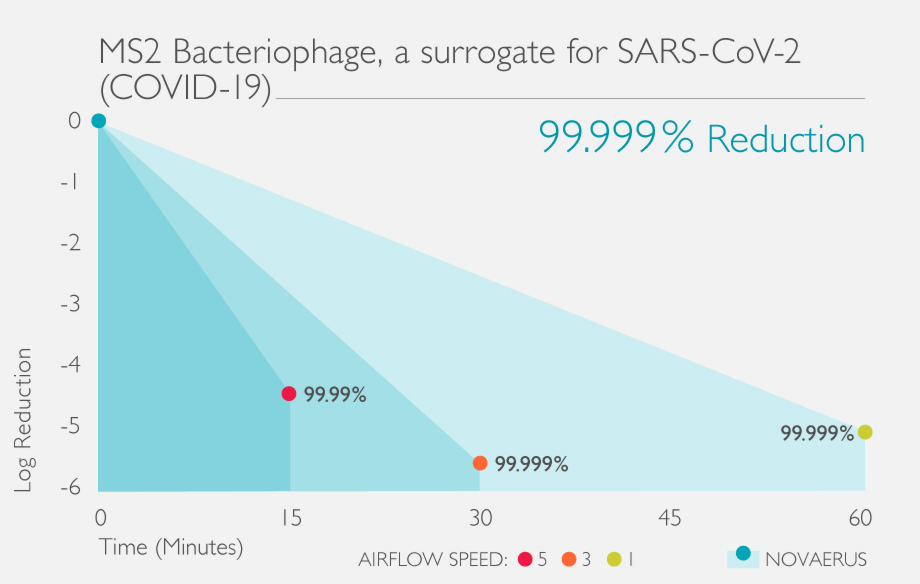SARS-CoV-2 Reduction
- Authors
- Jamie Balarashta - Study Director, Jeffery Trolingera - Principal Investigator
- Facility
- Aerosol Research and Engineering Laboratories
- Download
- Full Report
Objective
To evaluate the efficacy of the Defend 1050 at reducing aerosolized MS2 bacteriophage virus, a surrogate for SARS-CoV-2, the virus causing COVID-19.
Methodology
MS2 bacteriophage virus was aerosolized into a 16m3, sealed environmental bioaerosol chamber containing the Defend 1050.
AGI impingers were used to sample the chamber bioaerosol concentrations. All impinger samples were serially diluted, plated and enumerated in triplicate to yield viable bioaerosol concentration at each sampling point and time. Samples were taken at 0, 15 and 30 minutes in order to quantify the reduction speed and capabilities of the Defend 1050.
Chamber control trial data was subtracted from the NV1050 trial data to yield net LOG reduction in the chamber for the bioaerosol challenges.
This study was conducted in compliance with FDA Good Laboratory Practices (GLP) as defined in 21 CFR, Part 58.
Summary of Results
When tested on the speed 5 setting, the Defend 1050 showed an average 4.41 net LOG reduction of MS2 bacteriophage virus which equates to over a 99.99% reduction, in 15 minutes.
When tested on the speed 3 setting, the Defend 1050 showed an average 5.53 net LOG reduction of MS2 bacteriophage virus which equates to over a 99.999% reduction, in 30 minutes.
When tested on the speed 1 setting, the Defend 1050 showed an average 5.1 net LOG reduction of MS2 bacteriophage virus which equates to over a 99.999% reduction, in 60 minutes.
These results indicate that in theory the Defend 1050 would help prevent the spread of airborne infection.
